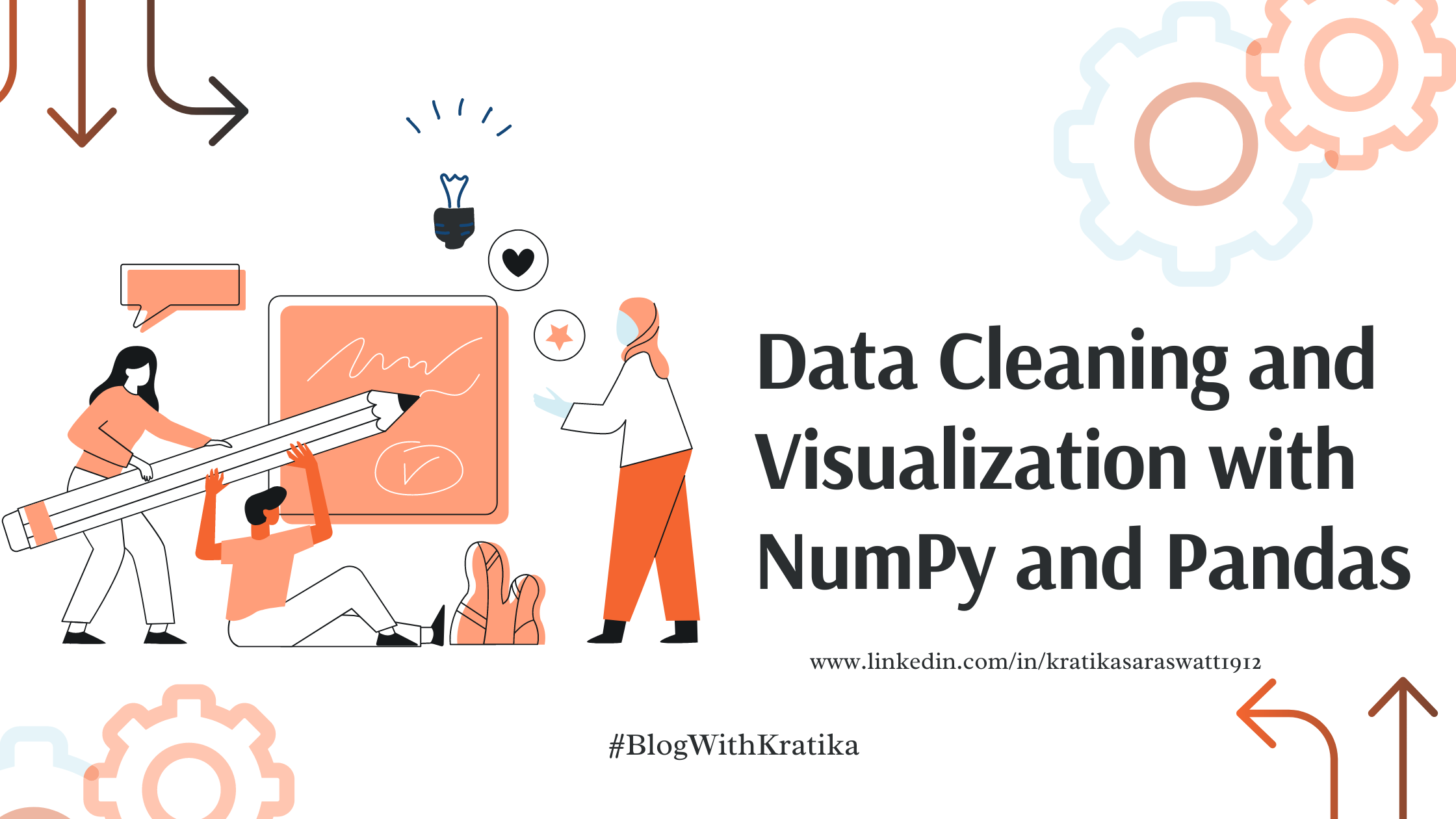Data Cleaning and Visualization with NumPy and Pandas
 Kratika Saraswat
Kratika Saraswat
In the realm of data science, the process of transforming raw data into valuable insights hinges significantly on two key steps: data cleaning and data visualization. Data cleaning ensures that the data is accurate, consistent, and ready for analysis, while data visualization helps in uncovering patterns and presenting data in a comprehensible manner. Two of the most powerful tools for these tasks in Python are NumPy and Pandas. This blog explores how these libraries can be effectively used for data cleaning and visualization.
Introduction to NumPy and Pandas
NumPy (Numerical Python) is a fundamental library for numerical computing in Python. It provides support for large, multi-dimensional arrays and matrices, along with a variety of mathematical functions to operate on these arrays. This makes it an essential tool for handling and processing numerical data.
Pandas is built on top of NumPy and provides more advanced data structures and data analysis tools. The primary data structures in Pandas are Series (one-dimensional) and DataFrame (two-dimensional), which are designed to handle and analyze data efficiently. Pandas is particularly well-suited for data manipulation and analysis, making it a go-to library for data scientists.
Data Cleaning with NumPy and Pandas
Data cleaning is a crucial step in data preparation, as it involves handling missing values, correcting errors, and ensuring the data is consistent. Here are some common data cleaning tasks that can be accomplished using NumPy and Pandas:
Inspecting the Data: The first step in data cleaning is to understand the structure and content of your data. This involves examining the data types, checking for missing values, and identifying any inconsistencies or errors.
Handling Missing Values: Missing data can pose significant challenges in analysis. Common strategies to handle missing values include filling them with a specific value (such as the mean or median) or dropping the rows or columns that contain missing values.
Removing Duplicates: Duplicate data entries can skew your analysis. It is important to identify and remove duplicate rows to ensure the data is accurate.
Data Type Conversion: Ensuring that each column in your dataset has the correct data type is crucial for analysis. This might involve converting columns to numeric types, dates, or categorical variables.
Outlier Detection and Removal: Outliers can distort statistical analyses and visualizations. Identifying and handling outliers—whether by removing them or transforming the data—can help in obtaining more accurate results.
Data Visualization
Data visualization is the process of representing data graphically to identify patterns, trends, and insights. Visualizations make complex data more accessible, understandable, and usable. Here are some common types of data visualizations that can be created using Python libraries integrated with NumPy and Pandas:
Histograms: Histograms are useful for showing the distribution of a single variable. They help in understanding the frequency of data points within different ranges.
Scatter Plots: Scatter plots are used to visualize the relationship between two variables. They can reveal correlations, clusters, and trends in the data.
Box Plots: Box plots (or box-and-whisker plots) provide a summary of a dataset's distribution, highlighting the median, quartiles, and potential outliers.
Correlation Heatmaps: Correlation heatmaps display the correlation coefficients between variables in a matrix format. They are useful for identifying relationships and dependencies among multiple variables.
Conclusion
Data cleaning and visualization are indispensable steps in the data analysis process. NumPy and Pandas offer powerful and flexible tools for performing these tasks efficiently. By ensuring your data is clean and well-structured, you set a solid foundation for analysis. Through visualization, you can turn this data into actionable insights that drive informed decision-making.
Mastering data cleaning and visualization with NumPy and Pandas will enhance your ability to make data-driven decisions and uncover hidden patterns within your data. Keep exploring and experimenting with different datasets to refine your skills and expand your analytical toolkit.
Subscribe to my newsletter
Read articles from Kratika Saraswat directly inside your inbox. Subscribe to the newsletter, and don't miss out.
Written by
